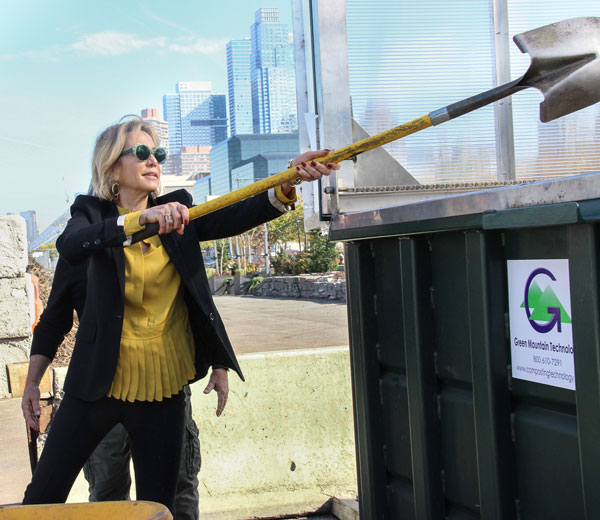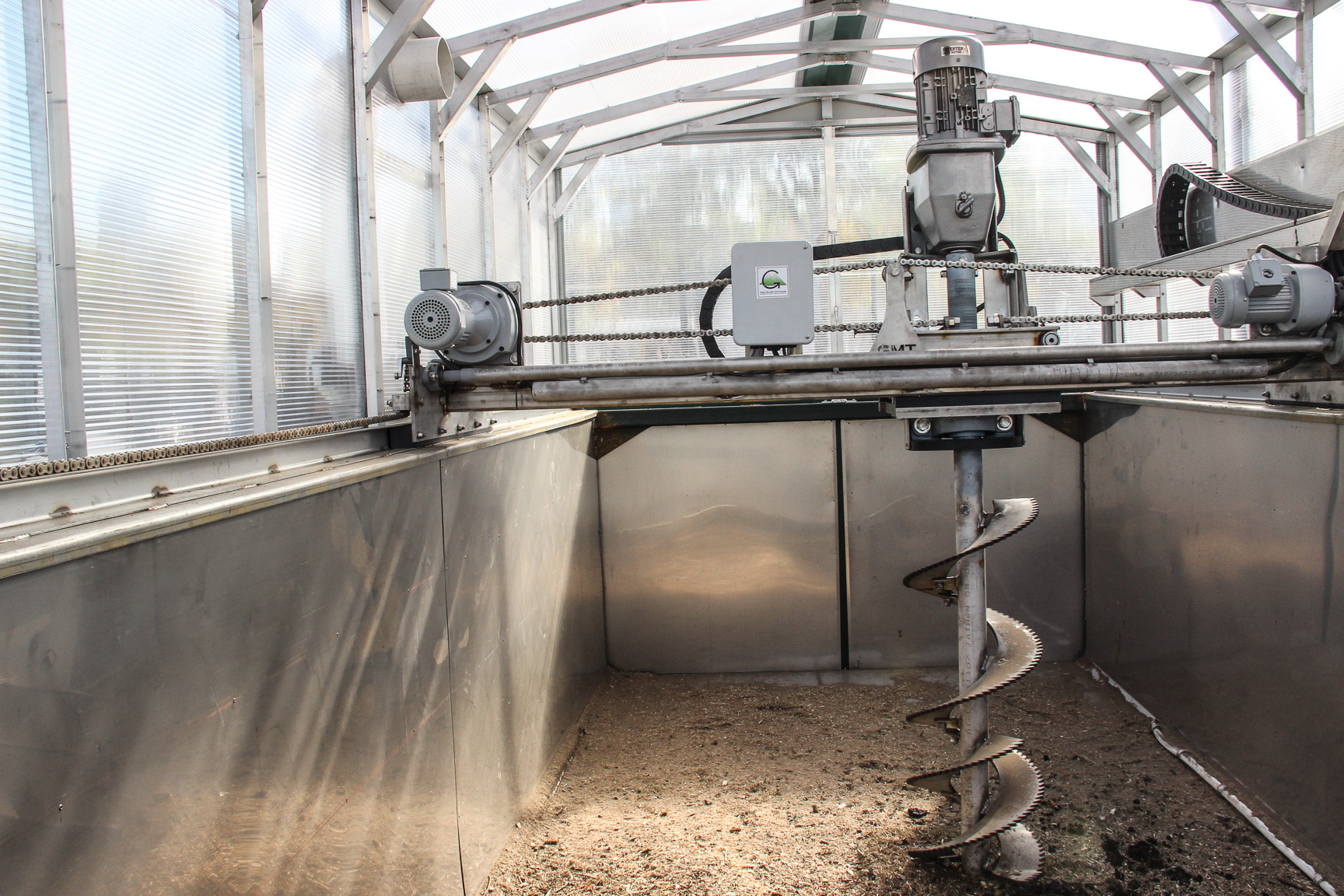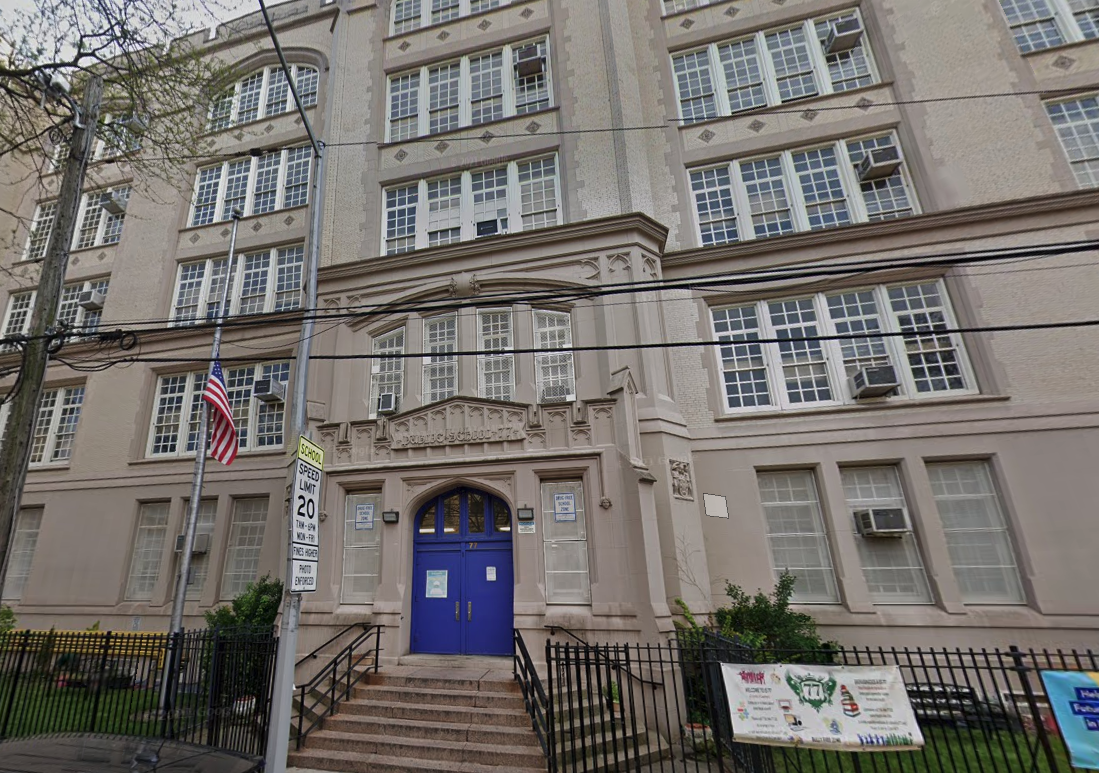
Madelyn Wils, Hudson River Park Trust C.E.O., has it made in the shades as she pitches some compost into the hopper.
Hudson River Park recently got even “greener,” as park officials tossed the first batch of compost material into the waterfront park’s new composter, officially opening the Hudson River Park Composting Center.
The composting center will turn the half ton of weeds, branches and other plant waste generated by the park daily into reusable compost to help keep the park’s plants, trees and shrubs healthy and vibrant. Friends of Hudson River Park procured the new automated composter with the support of donor Chris Fiore and L Brands Inc.
The 8-foot-wide, 16-foot-long composter is near the park’s Chelsea section, and has a greenhouse-style covering to trap heat and keep out the elements. A giant auger (picture a huge corkscrew) inside the machine automatically churns the materials for 30 minutes twice a day to speed up the composting by aerating the materials.

According to Hudson River Park Trust horticulture specialists, the best compost is made like a soup. Green compost, such as weeds, grass clippings and other herbaceous materials, acts as a base — like a broth. This is mixed with brown waste, like branches and dried leaves, which are like the vegetables. Finally, it’s topped off with composted food items, like coffee grounds and banana peels, that are packed with nitrogen.
The composter then churns and mixes these ingredients, while heating them to 140 degrees to keep the weed seeds from spreading. In 25 days, the compost is ready to use.
The composter will help the park save “green,” too — about $40,000 in waste-removal costs — while creating compost worth about $20,000 that would need to be purchased.
For now, the food waste in the composter is coming from the Trust’s offices. The park agency is collecting about 25 pounds per week of food waste, and eventually hopes to expand the program and collect compost from the park’s tenants.

































